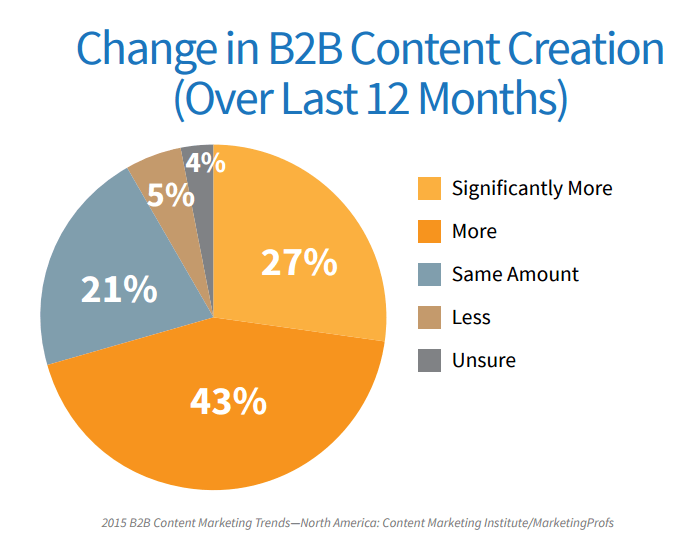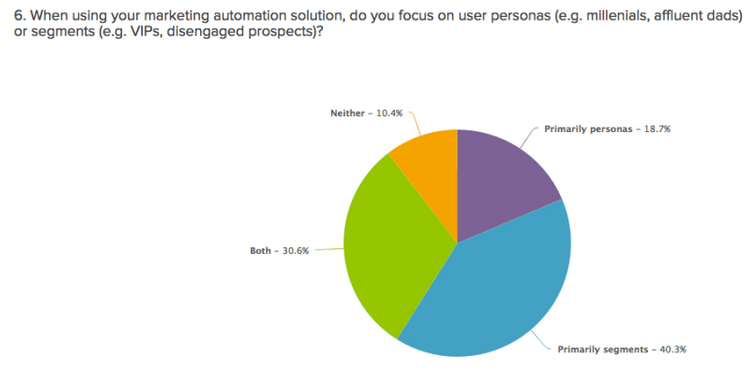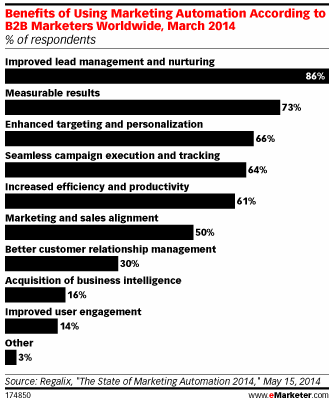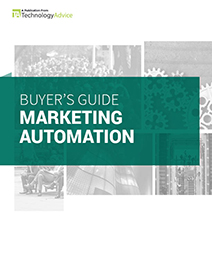How do you create customers from casual passersby? This single question has been and likely always will be the greatest challenge for business-to-business marketers and sales teams.
Lead nurturing is about finesse, and mistakes in the process will derail the entire strategy
And for good reason. The series of actions B2B buyers undertake before making a purchase decision is complex and often nonlinear. For example, Brian Carroll, author of Lead Generation for the Complex Sale observes that most lead nurturing programs don’t even begin to impact sales conversion rates until a minimum of 5 touches. And that could be for a relatively shorter purchase cycle.
The average B2B buyer is cautious — there’s professional prestige as well as advancement opportunities on the line. That means lead nurturing is a finesse game, and mistakes in the process can derail the entire strategy.
If your nurturing process isn’t a coherent, educational experience, you’re likely losing customers. And even if you’re doing pretty well, there’s always room for improvement.
To identify where marketers most often go wrong, we’ve reached out to experts on the customer journey for their input on the common violations of lead nurturing standards. Here’s the full list of mistakes, as well as how to fix them.
Producing Content That’s “Good Enough”
Content is the cornerstone of lead nurturing. As customers progress through their journey, they look for trustworthy answers to a series of questions. Content provides those answers, but there’s increasing competition to produce the all-encompassing answer and win the trust of your audience.
Here’s the proof. The Content Marketing Institute’s 2015 B2B Benchmark report found that 70 percent of marketers are creating more content than they did last year.

B2B agency Velocity Partners argues that this deluge of content is in fact content marketing’s worst enemy. The coming tsunami of content will hurt marketers’ relationships with their audience, because the internet will be awash in, well … crap.
At this point, creating content that’s “good enough” or that checks some boxes your boss created is an exercise in futility. If you want to earn the trust of your audience and convert them into customers, you need to create something outstanding. You need to own the answers to the questions your audience is asking.
Thinking a Job Title is a Persona
“One of the common [lead nurturing] mistakes is that people don’t customize the nurture path to the audience buyer persona. A marketing buyer message sent to an IT decision maker not only doesn’t make sense, but also frustrates the buyer,” says David T. Scott, author of The New Rules of Lead Generation.
The needs of B2B buyers are eclectic to say the least. Each buyer must juggle office politics, individualized company ROI expectations, feature needs, integration requirements, user size, budget requirements, etc, etc. Not putting significant effort into personalizing the customer journey to address these obstacles is guaranteed to hamstring your lead nurturing efforts.
VentureBeat reports that of the 61 percent of marketers who personalize their marketing exclusively through their marketing automation platform, about 49 percent personalize on a persona level.

Simply creating personas doesn’t equal effective personalization. Settling for segmentation by title and company size isn’t sufficient to really uncover the core motivations that compel your audience to make decisions.
Ardath Ablee expertly outlines the composition of effective personas: “For personas to become useful tools, they must be focused on interviews gathered from salespeople, customer service interactions, and the buyers themselves. In essence, personas must help us identify how we could help buyers manage and expedite change. That’s really what buying is all about.”
Not Letting Sales Sell
“[A common mistake is] not having your salespeople send personal emails with relevant articles, blog posts, webinar invitations, etc. Do not seem like your company is just a machine … continuously add in personal touches during the nurturing process,” says Alessandra Ceresa, Marketing Director at Greenrope CRM.
Marketing automation platforms are impressive tools when used correctly, and can provide dynamic, relevant content to leads during the nurturing process (more on that later). However, many B2B sales cycles still culminate with a lengthy conversation with a sales representative, meaning automation’s main purpose is to supply Sales with opportunities to close, not do the actual closing.
If the lead nurturing process isn’t properly synced with your Sales team’s process, leads will continue to receive emails from the automation system when they should be communicating exclusively with Sales.
As Adam Johnson from QuoteWizard confirms, “this mistake often causes over communication, leading to miscommunication and disrupting the buyer journey for all parties.”
But wait … wasn’t marketing automation supposed to fix these Sales and Marketing snafoos? According to eMarketer, the software might not have united these two departments quite as well as you would expect.

Only 50 percent of respondents cited Marketing and Sales alignment as a major benefit of marketing automation. This is likely due to Marketing departments producing too much content and overwhelming prospects.
The term “sales enablement” has recently become popular. It refers to “ensuring that every seller has the required knowledge, skills, processes, and behaviors to optimize every interaction with buyers.”
A bit rigid, but it underscores the importance of arming Sales with the information and content they need to close. We know that B2B requirements are varied and in some instances arcane. It’s critical to let an actual human work through these requirements on a one-to-one basis rather than trying to anticipate every question your audience has with emails and content.
Nurture leads with excellent content that builds trust with your brand, get them to agree to a conversation with your neighborhood friendly sales rep, and then let the sales rep sell. If they need to send some of that great content along in a personal email to the lead, make sure they have the resources to do that too.
This typically means getting some cloud-based content sharing software (see our Box vs Dropbox article to compare two great options).
Whatever you do, just stop sending life-cycle emails to leads once they’ve been accepted by Sales.
Not Using Behavioral Targeting and Triggered Emails
The word dynamic gets thrown around a lot, and is sometimes dismissed as another piece of jargon that everyone says but no one understands.
Dynamic doesn’t deserve that.
As an adjective, dynamic means “characterized by constant change, activity, or progress.” So when we say “dynamically send targeted content,” we’re really describing marketing that adapts to the behavior of our audience.
Dynamic marketing most commonly takes the form of triggered emails sent via marketing automation systems in response to a lead’s behavior on your website or social channels. Triggered emails are more effective because they unite the triumvirate of email marketing: delivering the right content to the right person at the right time.
delivering the right content to the right people at the right time
Unfortunately, only around 20 percent of marketers are using triggered emails according to eConsultancy.
Developing triggered emails (aka, behavioral targeting) isn’t that complex — triggered emails are an expected feature of marketing automation systems. The hard work is setting up the triggers throughout your nurturing campaign.
Consider what set of actions should lead to a trigger email. Does reaching a certain lead score earn your audience a triggered email to contact sales, or start a free trial? Should viewing a certain series of articles trigger a nurture track dedicated to that topic?
Regardless of precisely where you build your triggers, they should be a top tactical priority.
(Read more about examples of triggered emails and dynamic content here.)
Not Optimizing Your Lead Scoring With Conversion Metrics
When it comes to marketing automation and lead nurturing, marketers are constantly admonished not to “set it and forget it.” This principle applies to automated campaigns, but also applies to the lead scoring logic used to identify which leads are ready for Sales.
Like most things in marketing, lead scoring is a hypothesis. Each point you attribute to an action is an (educated) guess at which behaviors indicate buying intent. Unless you nail it the first time (unlikely, but not impossible), you’ll need to work with Sales to adjust your scoring logic after you’ve developed a baseline from your original score set.
^Sometimes people nail things on the first try, but it’s unlikely with lead scoring.
So how do you know if your lead scoring is working? A simple equation that tracks conversions from Marketing Qualified Leads (MQLs) to Customers will give you a baseline against which to measure performance. It looks like this:
(# of MQLs sent to sales) / (# of customers closed from MQLs)
If your percentage is embarrassingly low — like two percent low — it’s time to readjust the way you score leads. Even if your conversion rate into projects is respectable, it’s always a good idea to look for areas to improve. Which leads didn’t convert into customers? How were they scored? Did their actions differ in a significant way from leads that became customers?
These are all important things to ask on an ongoing basis. Such questions are what keep Marketing and Sales talking, which keeps them better aligned.
***
This isn’t an exhaustive list of lead nurturing mistakes. The B2B customer journey is too complex to catalog every error committed in the marketing world. But this is a collection of some of the most valuable opportunities for improvement — beyond of course the hackneyed observations such as “write subject lines that grab attention.”
Buyers have a complicated job in choosing new software or enlisting a service provider. The series of interactions marketers have constructed for them shouldn’t be one more obstacle to puzzle through — they should be seamless and helpful.
Happy nurturing.
_____
Looking for more advice on lead nurturing? Make sure to check out B2B LeadsCon Summit on August 24-26th, where you can learn about the latest B2B lead gen practices from industry experts. Speakers include Ruth Stevens, President of eMarketing Strategy; Brandee Johnson, Sr. Marketing Manager at Lego; and Scott Binker, President of Ion Interactive. Register by August 18th to save $100.

